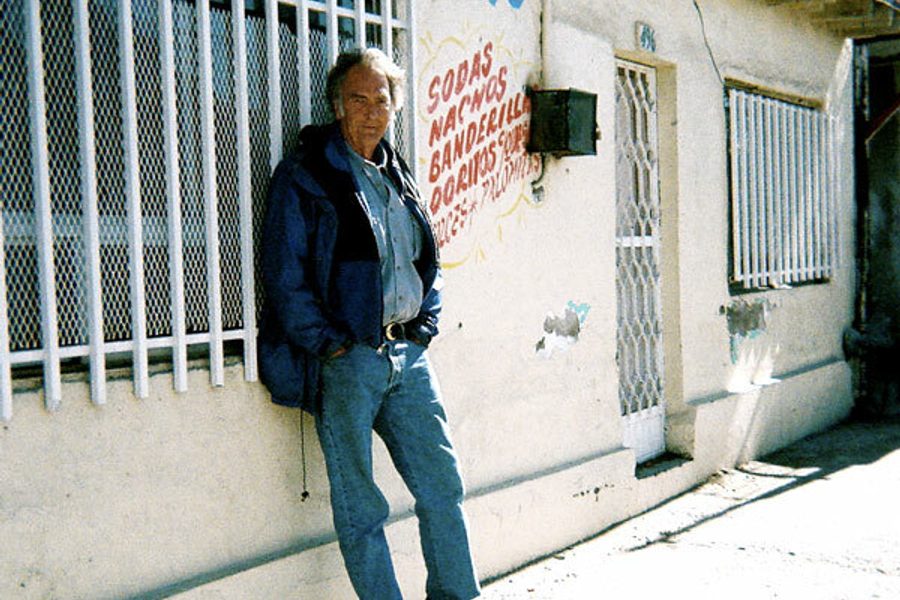Inside the World’s Deadliest City
Juarez’s anarchy cannot be separated from American policy and addictions, says journalist Charles Bowden
Jeremy Gantz

Drive across the Rio Grande from El Paso, Texas, and you’ll enter the most dangerous city in the world: Ciudad Juárez, where more than 6,000 people have been murdered since 2008, including more than 1,700 this year. Once a fast-growing laboratory for free-trade initiatives, Juárez now produces drugs and dead bodies, as thousands of Mexican soldiers and increasingly brazen gang members roam the city of just over 1 million.
As the killings become more grisly and frequent, questioning their cause has become almost suicidal. At least 30 journalists have been killed or disappeared in Mexico since 2006, according to the Committee to Protect Journalists. That makes Charles Bowden’s new book Murder City: Ciudad Juárez and the Global Economy’s New Killing Fields–whose most chilling subject is an experienced sicario, or hitman – all the more remarkable, and important. For while authorities on both sides of the border explain the violence engulfing Juárez with familiar “war on drugs” rhetoric, Bowden argues it is the predictable result of NAFTA’s failure, endemic poverty and America’s appetite for drugs.
“I kept trying to never go back,” says the 65-year-old Tuscon, Ariz., resident. “And then I would realize that I couldn’t walk away.”
Beyond the violence, what surprised you most about Juárez during your time there?
That it keeps functioning. This is a city that’s had 25 percent of housing abandoned. Had at least 40 percent of its businesses slam their doors shut. That has lost at least 100,000 jobs. That has had an explosion of violence, and there are still about one million people that get out of bed every morning and try to go about a normal life. I have said the city is dying, because by any logical standards it is. But there is a part of me that thinks I’m seeing a new kind of human community come into being that I don’t want to face and that I don’t have a name for. A city where murder, violence, kidnapping, torture, robbery and extortion are the economy. This is a new kind of city.
You write that free-trade schemes “have failed and in Juárez are producing poor people and dead people faster than any other product.” What is NAFTA’s relationship to Juárez’s descent into violence?
In the late ’60s the Border Industrialization Program, the prototype of what became NAFTA, was established in Juárez. At the beginning, wages were higher than the people of Juárez had experienced, but after 40 years, they have steadily declined. Factories employ children. NAFTA produced enormous squatter barrios of people who are fully employed by American factories and couldn’t make a living wage. NAFTA destroyed light and middle industry in Mexico, and it destroyed peasant agriculture.
But NAFTA is a disaster that cannot be recognized as a disaster because what we call “free trade” is not an empirical policy tested by fact; it is a theology. NAFTA is a failure. It doesn’t solve poverty, it expands it. And the people burn out because it suddenly dawns on them that they’re like hamsters on a wheel, and they’re going backward instead of forward.
And people then turn to the city’s illegal economy?
It’s not quite that simple. The drug economy in Mexico exists because of U.S. policy – the prohibition of drugs here. It has grown and now injects $30 billion to $50 billion of hard currency into the Mexican economy through criminal organizations. But what has happened in Juárez – which is not examined often – is the growth of domestic drug consumption. Various clinicians there estimate this city of a little more than a million now has 150,000 to 200,000 addicts.
Until the fall of 1997, it was difficult to buy any drug in Juárez, except possibly marijuana. Today, there are 500 to 900 street gangs in Juárez. These gangs all sell drugs. These gangs are now killing each other over who controls the street corners to sell to this mass population that’s now using drugs. That is a large part of the violence. It’s exactly like the HBO series The Wire, where every little street corner suddenly has value because of the drugs.
Would legalizing drugs on either side of the border do any good?
Yes, I’m in favor of legalizing all drugs, for the following reasons: One, I don’t believe the state has the right to tell any human being what they can ingest. Two, the war on drugs in the United States is more 40 than years old and has created the largest per capita prison population in the world, a huge police state to search for drugs, and its achievement has been that every illegal drug is now cheaper and more available and of higher quality than when the war on drugs officially began under President Richard Nixon.
To say this policy is a failure is to be kind. If this policy were a ship, we would name it the Titanic. We’ve taken a public health problem, criminalized it, and not even touched drug consumption.
Is the war on drugs salvageable?
Look at the current war in Mexico: We are now looking at 28,000 Mexicans executed since President Felipe Calder”n declared war on traffickers in December 2006. There is not a single report by any federal agency of any place in the United States where this war has created a drug shortage, disruption in drug distribution or an increase in price. So if this is about fighting drug organizations, 28,000 Mexicans are dead for nothing.
There are three things that have to be faced: One, the war is lost. Two, the only solution is legalization. Three, you have to legalize all drugs, because if you merely legalize marijuana, the same criminal organizations will still fatten off the other drugs.
What the war on drugs has created, increasingly, is corrupt agencies in the United States. There’s simply too much money for everyone to stay honest. Everyone in these agencies speaking candidly mentions this.
A July report from the U.S. Government Accountability Office says there’s no way for the State Department to measure the effectiveness of the Merida Initiative, which gives more than $1 billion to the Mexican government.
Oh yes, there is. I’ll give you some statistics. These are not honest statistics, since they come from the Mexican government, but whatever the errors in these numbers, they are still startling.
In 2009, more than 8,000 Mexicans were executed in this Mexican government initiative against the drug industry. The tool for attacking the drug industry was the Mexican army – the largest criminal gang in Mexico, with about 200,000 members. In 2009, the Mexican army suffered 35 dead. If you believe that’s a war on drugs, you’re on drugs. This is a war for drugs. The Mexican government couldn’t possibly wipe out the drug industry because the country would go bankrupt.
How is it possible that El Paso is one of the safest cities in America, with falling crime rates, while Juárez lies across the Rio Grande?
Well, it’s a question that’s ignored, because one of the constant themes is that violence is spilling across the border. That’s a lie. It seems that if you put people in a city where the police are not totally corrupted, where they’re secure in their property, where they can get a job that pays a decent wage, they don’t kill each other.
How well have U.S. media explained America’s role in Mexico’s descent into anarchy?
Most of what you read about what’s going on in Mexico are pronouncements of the Mexican government and the U.S. government. The U.S. press is either reluctant or incapable of looking at the consequences of free trade, of explaining the real reasons Mexicans are entering the United States illegally. The U.S. press uncritically repeats unverifiable statements by two governments about a so-called drug war going on, when almost everybody being killed in Mexico is incredibly poor. Do you think the man murdered in Juárez for not paying protection money for his hamburger stand was a member of the Juárez cartel?
You’ll read constantly about a cartel war and yet nobody in the U.S. press ever talks to a cartel member. It seems to me that if these capos are staging some sort of duel on main street, you ought to go talk to them. They are people. I wish that everybody that murdered was some sort of terrible person with horns, but that isn’t the case.
What do you think Juárez will be like in 25 years?
I don’t know, but it can’t go on this way. Obviously you can’t have people abandoning their houses and have your basic “product” be murder. There is no future in this, but I can’t see anything that’s causing it to end.
For more on Juarez and Mexico’s current crisis, read In These Times’ interview with Molly Molloy, who has collaborated with Bowden and tracks the daily carnage on her influential listserv, Frontera List.
Jeremy Gantz is an In These Times contributing editor working at Time magazine.








